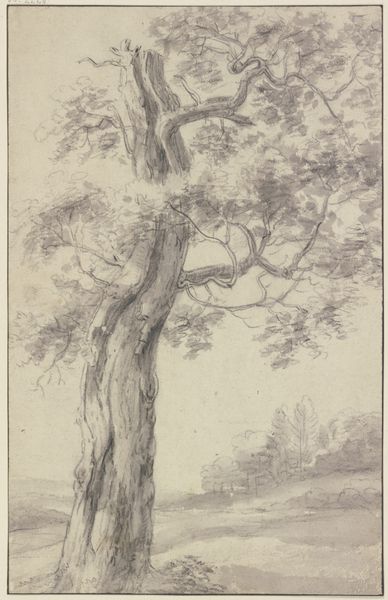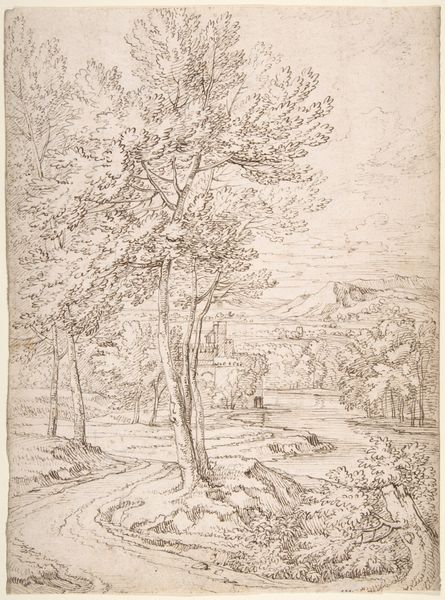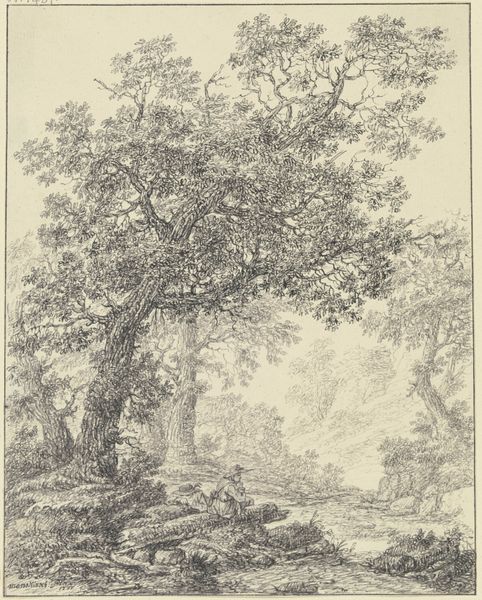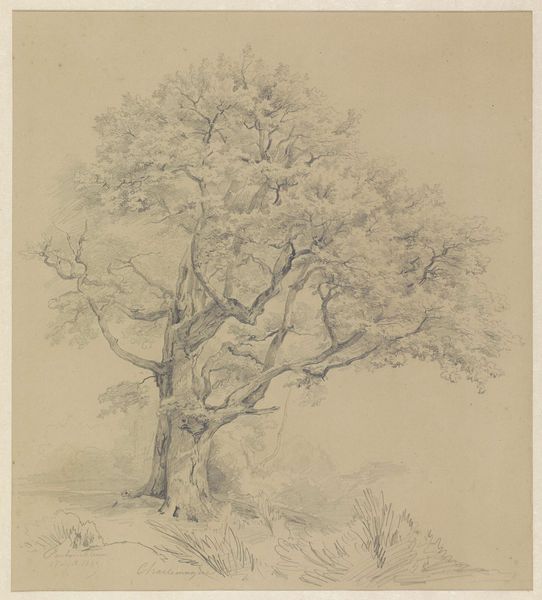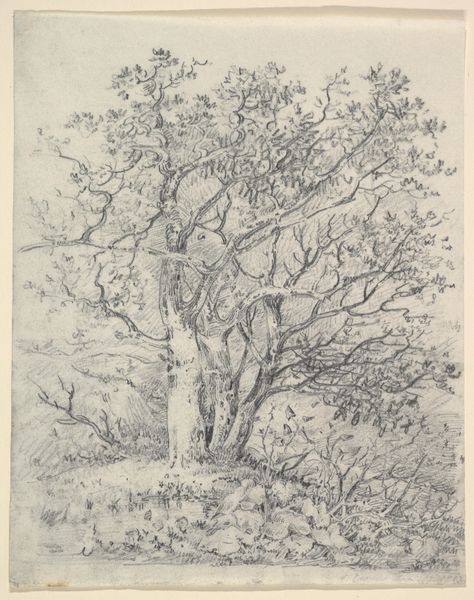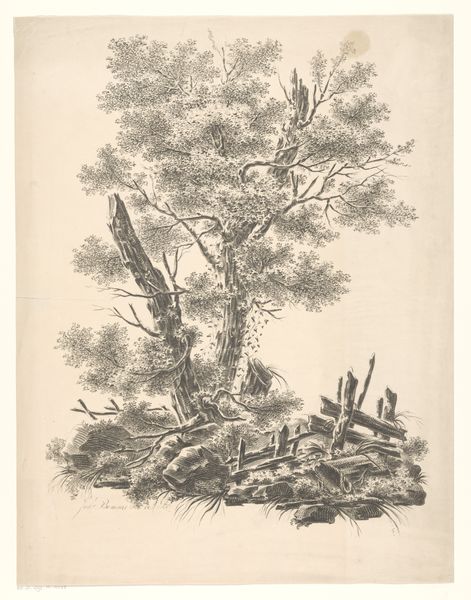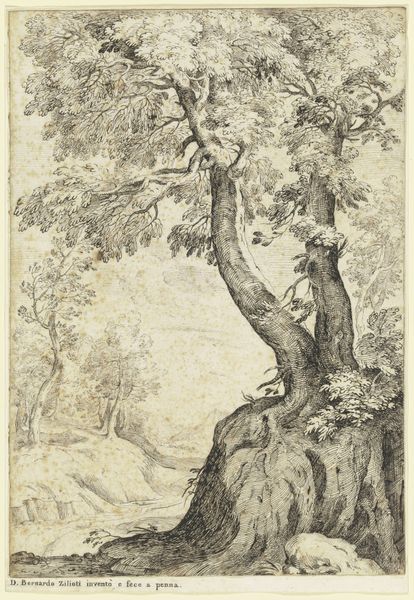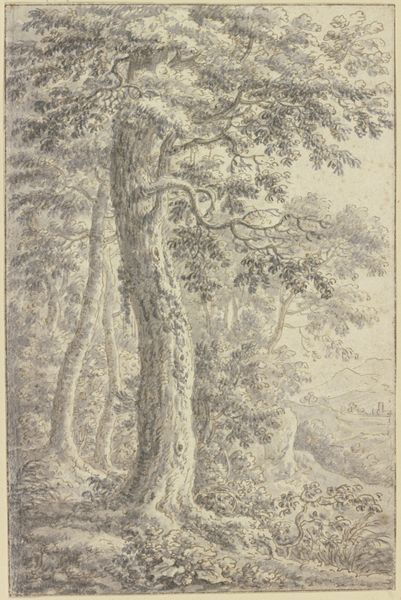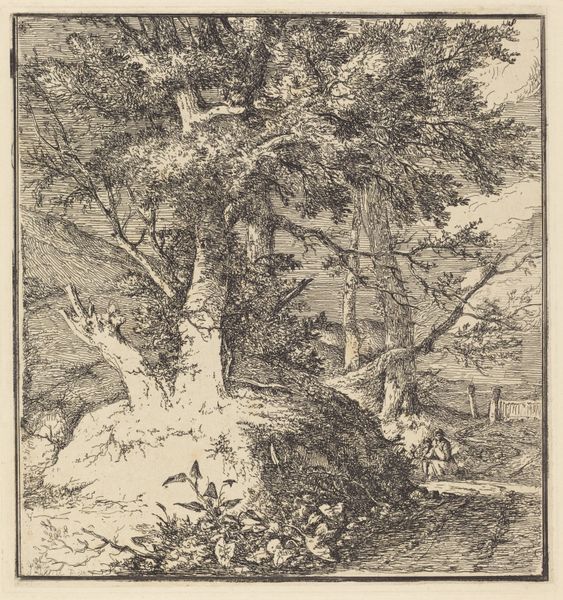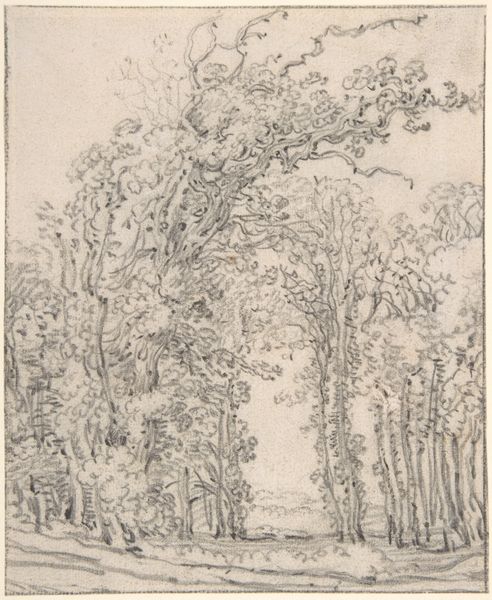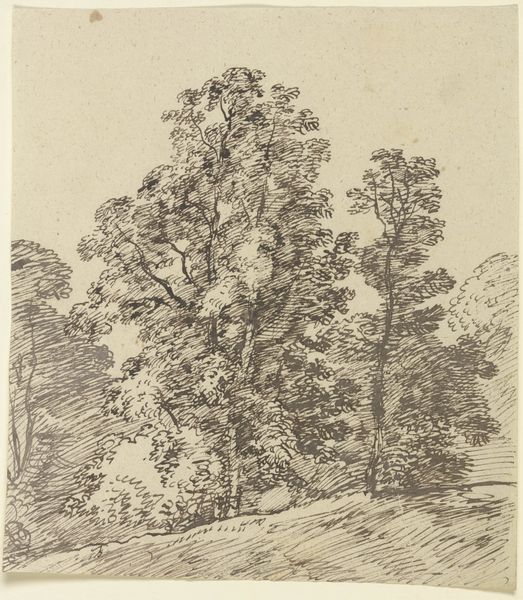
drawing, pencil
#
drawing
#
landscape
#
romanticism
#
pencil
#
realism
Dimensions: Sheet: 8 1/8 x 6 3/8 in. (20.7 x 16.1 cm)
Copyright: Public Domain
Curator: At first glance, there is something so evocative in its simplicity, a melancholy almost, rendered entirely in monochrome graphite. Editor: Indeed. What we have here is John Crome’s "Study for Tree Trunks and Lane," dating roughly from 1807 to 1817. Crome was a leading figure of the Norwich School of painters, and this piece exemplifies his meticulous observation and draughtsmanship. It is now held at the Metropolitan Museum of Art. Curator: The bare trees dominate. Observe the composition, the sinuous branches reaching out like capillaries against what seems to be open sky. And look at the strategic tonal shifts: dark clusters of graphite delineating the foliage, fading into these almost spectral background lines. Editor: The scene captures, I think, a significant moment in the history of landscape art. During Crome's era, England's landscape became symbolic of national identity amidst political upheaval. Did Crome mean to portray the resilience or, perhaps, vulnerability of nature given the rapid industrial expansion? The lane itself could speak volumes about changing rural life. Curator: Certainly. Semiotically speaking, the tree could be understood as a symbol for the tree of life, for knowledge. This gnarly old tree presiding over the scene may connote resilience in the face of mortality; the adjacent lane presents the ever-diverging paths of life. Editor: His decision to capture this on paper rather than a grand canvas raises questions, though. Was this meant to be a preliminary study? Perhaps a personal reflection of the environment? The accessibility of landscapes broadened with increased urbanization—did art like this aim to instill a yearning for a vanishing pastoral life? Curator: Perhaps. Its materiality, I'd argue, is crucial here. The directness of pencil on paper renders a sort of intimacy. You see the artist’s process, his immediate impressions unfiltered. Editor: Exactly, and when seen in the wider social context, that raw intimacy challenges conventional academic portrayals, offering a fresh way of perceiving the relationship between humanity and landscape. Curator: So, both in its visual architecture and art-historical position, it asks us to think critically about both natural spaces and our experiences within them. Editor: It seems even simple renderings, such as this pencil sketch, offer a profound insight into both Crome’s technique and society's evolving engagement with the world.
Comments
No comments
Be the first to comment and join the conversation on the ultimate creative platform.

